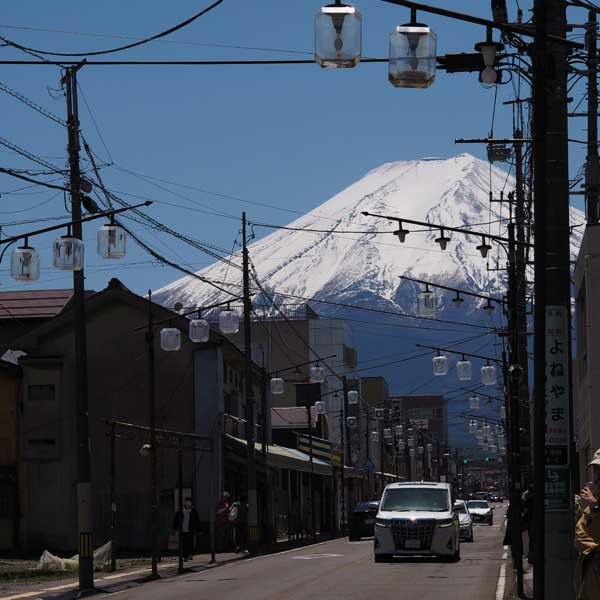A massive earthquake is forecasted and prophesied: What is Japan about to face?

[Mount Fuji. Photo credit to Unsplash]
Japan faces alarming concerns about a possible major earthquake along the Nankai Trough, while a viral earthquake prediction by Japanese writer Ryo Tatsuki about a July disaster is adding to public fear and confusion.
Tatsuki’s prophecy of a massive July disaster has captivated millions of social media users due to her reportedly accurate past predictions.
This viral attention is amplifying public anxiety about seismic risks in the region.
According to Tatsuki’s account, she claimed to have seen in dreams hints about Freddie Mercury’s death from AIDS, Princess Diana’s death, and the March 2011 tsunami disaster in Japan.
When these events later occurred, they drew even more attention from the public.
The prophecy gained additional attention as experts began observing signs that a massive earthquake could soon strike the Nankai region.
The Nankai Trough, where seismic activity has increased, is located along the coast of southern Japan, between Shikoku and Tokai.
This underwater trench is an area off the southwest coast of Japan where historically devastating earthquakes have occurred repeatedly.
The region indicates where two plates meet— the Philippine Sea Plate pushes underneath the Eurasian Plate.
As they press against each other, pressure builds up over time.
When that pressure is suddenly released, it causes very strong earthquakes, usually between magnitude 8 and 9.
Major earthquakes in the Nankai Trough typically happen every 100 to 150 years, each time causing serious damage and economic loss.
Historical earthquakes like the 1707 Hoei, the 1854 Ansei, and the 1944-46 Showa quakes, have collectively resulted in tens of thousands of deaths and missing persons.
Earthquake concerns have been growing in Japan following recent seismic activity.
Between June 21st and 28th, Tokara in Kagoshima recorded 535 earthquakes over magnitude 1, and a 5.1 magnitude quake struck nearby on June 29th.
Experts warn that a Nankai Trough quake could cause ¥ 1.47 quadrillion yen in economic damage over 20 years — 2.4 times Japan’s GDP — and could take 22 years for the country to recover.
In response, the government announced a disaster prevention plan on June 11th, aiming to cut expected deaths from 298,000 to 60,000 and reduce building collapses by half.
The plan’s goals include raising coastal levee coverage to 50% and completing 32% of key inland facilities by 2030.
The earthquake fears have drastically impacted Japan’s tourism industry.
Many potential travelers cancelled their trips, chose other destinations or postponed travel until autumn because of widespread concerns from around the world.
Arrivals from Hong Kong fell 11 percent year-on-year in May, with a steeper decline expected in June and July, according to government data.
Travel bookings from China, Vietnam, and Thailand have also dropped by 30 percent compared to the same period last year.
In response to weakening demand, Greater Bay Airlines has reduced its three-times-weekly roundtrip flights between Hong Kong and Tokushima, Shikoku, to two, and suspended its seasonal service to Yonago in Tottori Prefecture.
Hong Kong Airlines has also cancelled its July and August flights to Kagoshima and Kumamoto in southern Kyushu.
Experts emphasize that the ‘July earthquake’ prediction has no scientific basis.
Japan Meteorological Agency Director General Ryoichi Nomura said that it is impossible to predict an earthquake at a specific location with precise timing and magnitude.
He also refuted claims that a tsunami could physically connect Hong Kong, Taiwan, and the Philippines to the mainland, explaining tsunamis do not raise land.
Even if a major quake hits the Nankai Trough, a tsunami larger than the 2011 disaster is very unlikely.
With continued signs of seismic activity in Japan, the nation must respond carefully in the coming months and over the next few years.
Whether the warning comes from a prophecy or science, the risk of a major earthquake in Japan is real.
Instead of giving in to fear, both people and the government are encouraged to focus on preparation: strengthening buildings, improving evacuation plans, and raising public awareness.
Proactive action is the best way to protect lives in the future.

- Danny Jung / Grade 11 Session 2
- Belmont Secondary School

![THE HERALD STUDENT REPORTERS [US]](/assets/images/logo_student_us.png)
![THE HERALD STUDENT REPORTERS [Canada]](/assets/images/logo_student_ca.png)
